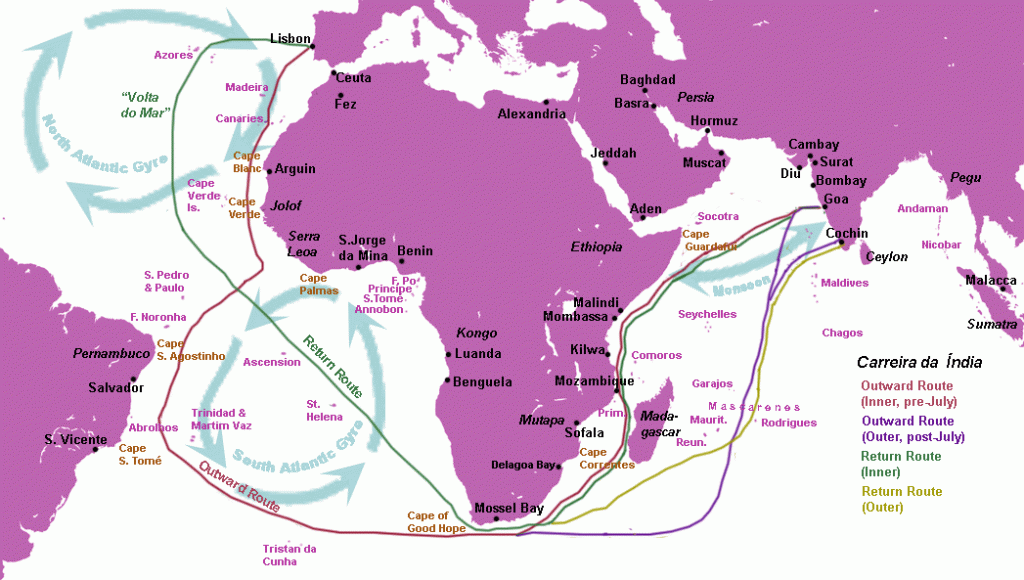In the early 1800s, some ships sailed into London’s harbour and made the British very afraid. You would think that the ships belonged to some European power intent on attacking London! You’d be wrong. These ‘hostile’ ships were Indian. They had come from the Bombay dockyards, half-way around the world, and they were only carrying Indian products like spices and textiles. The problem wasn’t what they were bringing in, but the ships themselves. These ships were courtesy of the Wadias, a rich, Parsi, Indian business family from Bombay.

The ship-builders of London were alarmed that made-in-India ships were being used by the East Indian Company (EIC) to freight goods. They declared that British shipbuilders were on the brink of the ruin and that their families would all die of starvation if the situation was not remedied at the earliest.
To understand why the British were so afraid, we have to go all the way back to 1453. That was the year Constantinople fell to the Ottoman Empire, effectively throwing trade routes between the east and west into complete disarray. Western Europeans realised that they needed to find an alternative route and quickly. Luckily for them, the Portuguese discovered the shipping route to India in the late 1400s and trade with the east bounced back. First, the Portuguese, then the Dutch, French and English, in quick succession, started trading on this sea route to India. Then a new problem came up. The Europeans had a lot of things to buy from India, but not much to sell. To finance this one-sided trade, they used the gold they plundered from the Americas after conquering them in the early 1500s.
Soon, however, the gold started running out and they had to find other ways of paying for Indian goods. It became apparent that the one thing they could rely on to finance their imports from India were exorbitant freight charges. It became clear that the nation that controlled the sea would also control trade. Britain was quick to out-compete other European powers. They obliterated their competition and took control of the seas. The shipping industry became a major lifeline for Britain. That is why those Indian ships were such a cause for concern. If Indian ships could ferry India’s produce to Europe, no one would pay the British for freight.

How did the British remedy this situation and save its shipbuilders from ruin and starvation? They used a strategy that has since then been used many times by many different states to corner all sorts of markets. They passed the Navigation Acts in 1651 which banned Indian ships from ferrying any produce to Britain or any of its colonies. The Indian shipbuilders got around that law by selling their ships to Europeans and having them run the trade. They were able to do so because the ships they manufactured were superior to anything manufactured in Britain or Europe.
But Indian shipbuilding would not last. By the early 1800s, the East India Company had already become a major political power in India. In its dominions, it started levying exorbitant taxes on Indian manufacturers and merchants. With these taxes, the EIC proceeded to finance technological developments back in Britain. Improvements and inventions followed in quick succession: 1836 screw-propeller, 1840 iron hull, 1880 steel hull, 1895 diesel engine, 1900 turbine or rotary steamer, 1903 electric motor vessel. Furthermore, they flatly refused to share these inventions, and every invention added to the difficulties of Indian shipbuilding.
Indian shipbuilders like the Wadias were mere merchants with no political power. They suddenly found themselves in a race they had no means to finance. Thanks to the navigation laws and to trade policies pursued first by the East India Company and then by the British government after 1857, Indian shipping was slowly destroyed. In fear of losing their supremacy on the sea, the British could not do anything else.

You can hear more about the British in India by joining the ‘British Blueprints’ trail in Chennai. If you’d like to know more about Bombay’s history and the people who helped build it, you can take the ‘The Bombay Story’ walking tour in Mumbai.
Archives
- January 2022
- December 2021
- November 2021
- August 2021
- March 2021
- February 2021
- January 2021
- December 2020
- November 2020
- October 2020
- September 2020
- August 2020
- April 2020
- March 2020
- February 2020
- January 2020
- November 2019
- October 2019
- September 2019
- August 2019
- July 2019
- June 2019
- August 2017
- February 2017
- January 2017
- October 2013
Featured Posts
- Tales that pots tell: Keeladi excavations AUGUST 18, 2021
- The Last Grand Nawab: Wallajah FEBRUARY 10, 2021
- How Tej Singh became Raja Desingu of Gingee FEBRUARY 5, 2021
- How Shahjahan seized the Mughal throne JANUARY 28, 2021
- Alai Darwaza – Qutub Minar Complex, Delhi NOVEMBER 21, 2020
- Marking History through British buildings NOVEMBER 17, 2020
- The last great queen of Travancore NOVEMBER 7, 2020
- Brahmi and the evolution of scripts OCTOBER 15, 2020
- The Cambodian King of Kanchipuram OCTOBER 14, 2020
- James Prinsep – the man who read the writing on the wall OCTOBER 10, 2020
- Mariamman – the Village Goddess who travelled SEPTEMBER 30, 2020
- Misnamed Monuments of Mamallapuram SEPTEMBER 28, 2020








